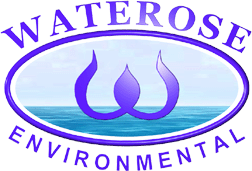 | ||||||
| Articles | Projects | Resume | Cartoons | Windsurfing | Paintings | Album |
Sustainable Development Series:
Travelling into the Future
to Transportation 2020

by Waterose
Our basic thinking about transportation has to change. Transportation today causes harm to human health and to our environment by the emission of fine particulate matter (FPM) and gases which alter the chemistry of the atmosphere (Wallis, 1998). The internal combustion engine (ICE) consumes fossil fuels contributing to harmful levels of ozone and smog (Nixon, 1995). Today, there are new emission controls that reduce the levels of harmful substances from ICEs (Nixon, 1995). Despite these advances, pollution levels continue to rise due to increased commute distances and global population growth which translates into a higher level of usage (Keating, 1997).
There is no doubt that the present trends in population growth, consumption of fossil fuels, and energy sources for transportation has to change to prevent further environmental degradation (Train, 1995). There are limits to the amounts of pollution that the Earth can naturally absorb (Train, 1995). The atmosphere does not behave according to the laws of chemical equilibrium (Lovelock, 1995). Lovelock proposes under the Gaia Theory that the atmosphere is part of the total biosphere because it regulates the temperature and the chemical composition of the atmosphere so that it can maintain life (Lovelock, 1995). This is a dangerous theory because it suggests that the Earth is a living organism and will self-regulate any introduced imbalances. This kind of thinking fosters the preposterous claims by economists that unlimited growth can create a healthier environment (Simon, 1995). Unlimited anthropocentric development is more akin to macroparasitism of the Earth by humans than it is to a benign symbiotic or mutualistic relationship (Wilson, 1995). Lovelock claims that the Earth would naturally purge itself of humans rather than permit any serious harm that would make Earth unfit to support life (Lovelock, 1995).
To prevent eviction by this planet, a basic paradigm shift to an ecocentric holistic relationship with the earth is necessary (Train, 1995). We must re-think the basics of transportation, how it is achieved, and why it is needed (Scott, 1998). There must be changes in technology, politics, economics, and culture. However, society is slow to adjust, therefore, transportation 2020 will incorporate only modest changes in technology (Vanderland, 1998).
Advances in alternatives are being made. New technology now produces combination fuel ICEsí that use ethanol blends for cleaner burning fuels (Vanderland, 1998). Ultimately, energy sources will shift towards electric vehicles and hydrogen fuel cells (Train, 1995). Hydrogen cells are the energy source of the future to replace ICEsí (Scott, 1998). The transition to new energy sources requires political support (Vanderland, 1998). For example, the implementation of the Clean Air Act in California has been a major driver in reducing emissions and stimulating new technology (Nixon, 1995). Economic incentives, like subsidies and taxes, are powerful instruments to expedite the mass production of low to zero emission vehicles (Vanderland, 1998). However, market incentives are the best driver to force car makers to produce alternatives to ICEsí (Train, 1995). Ultimately, cultural thinking has to change from life in the fast lane back to community planning on a local level where everything is close to home and travel is reduced to a pleasant walk to meet our needs.
References:
Written for Royal Roads University ES401 Sustainability Lecture Series: Human Health and the EnvironmentKeating, M. 1997. "Driving Forces of Change." in Canada and the State of the Planet: The Social, Economic, and Environmental Trends that are Shaping our Lives. Canadian Global Change Program. Oxford. Don Mills, Ont. Pp. 25-37.
Lamm, L. 1995. "Clean or Green: Political Correctness Vs. Common Sense in Transportation." in Taking Sides: Controversial Views on Environmental Issues. Sixth Ed. Ed. by T.D. Goldfarb. Dushkin Publishing. Guilford, CT. Pp 151-157.
Lovelock, J. and Margulis, L. 1996. "The Gaia Hypothesis." in Living with the Earth: An Introduction to Environmental Philosophy. Ed. by K.A. Peacock. Harcourt Brace. Toronto, Ont. Pp. 184-198.
Nixon, W. 1995. "The Air Down Here." in Taking Sides: Controversial Views on Environmental Issues. Sixth Ed. Ed. by T.D. Goldfarb. Dushkin Publishing. Guilford, CT. Pp. 146-150.
Scott, D. April 27, 1998. "Energy Systems - Hydrogen Era" ES401 Seminar Lecture Series. Royal Roads University. Victoria, BC.
Simon, J. 1995. "More People, Greater Wealth, More Resources, Healthier Environment." in Taking Sides: Controversial Views on Environmental Issues. Sixth Ed. Ed. by T.D. Goldfarb. Dushkin Publishing. Guilford, CT. Pp. 336-346.
Train, R. 1995. "A Call for Sustainability." in Taking Sides: Controversial Views on Environmental Issues. Sixth Ed. Ed. by T.D. Goldfarb. Dushkin Publishing. Guilford, CT. Pp. 330-335.
Vanderland, W. May 5, 1998. "Ethanol and Transportation." ES401 Seminar Lecture Series. Royal Roads University. Victoria, BC.
Wallis, H. April 20, 1998. "Transportation and Human Health." ES401 Seminar Lecture Series. Royal Roads University. Victoria, BC.
Wilson, E. 1996. "Symbiosis, Parasitism, and Commensalism." in Taking Sides: Controversial Views on Environmental Issues. Sixth Ed. Ed. by T.D. Goldfarb. Dushkin Publishing. Guilford, CT. Pp. 167-183.
Return to Index of Articles

 email Waterose
email Waterose
Please Sign My Guestbook
Please View My Guestbook

| Articles | Projects | Resume | Cartoons | Windsurfing | Paintings | Album |
 | ||||||